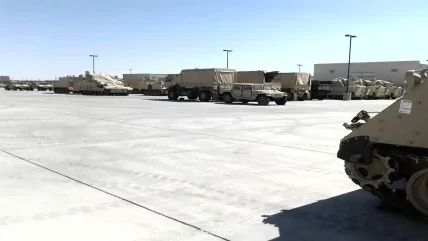
In an era dominated by digital communication and real-time information exchange, the defence and security industry faces unprecedented challenges related to misinformation and disinformation. These challenges not only impact public perception but also have profound implications for national security, military operations, and geopolitical stability. This article delves into the definitions, impacts, and countermeasures associated with misinformation and disinformation in the defence and security sectors.
Understanding Misinformation and Disinformation
Misinformation refers to false or inaccurate information spread without malicious intent. It often stems from misunderstandings, misinterpretations, or unverified sources. On the other hand, disinformation is the deliberate dissemination of false information with the intent to deceive or manipulate. Both phenomena are pervasive in today’s information environment, but their implications differ significantly, especially in the context of defence and security.
The Impact on National Security
Undermining Public Trust
One of the most insidious effects of misinformation and disinformation is the erosion of public trust. In the defence sector, trust is paramount. When false information about military capabilities, defence policies, or security threats spreads, it can lead to public confusion and diminished confidence in governmental institutions. For instance, exaggerated reports about military incidents or capabilities can create unnecessary panic or false security, disrupting public order and morale.
Influencing Political Decisions
Disinformation campaigns are often designed to influence political decision-making. By spreading false narratives, state and non-state actors can manipulate public opinion and political discourse, potentially swaying election outcomes or policy decisions. For example, during election periods, disinformation regarding defence policies or international alliances can polarise voters and undermine the democratic process.
Compromising Military Operations
Operational security (OPSEC) is critical in military strategy. Misinformation and disinformation can compromise OPSEC by providing adversaries with misleading or false information about troop movements, strategic objectives, or technological capabilities. In some cases, adversaries might use disinformation to bait military forces into strategic traps or to mask their own operational intentions.
Case Studies: Disinformation Campaigns
Russia’s Information Warfare
Russia has been widely recognised for its sophisticated use of disinformation as a tool of hybrid warfare. The annexation of Crimea in 2014 is a notable example. Russian state media and online platforms disseminated narratives portraying the annexation as a popular and peaceful reunification, despite international condemnation and evidence of military intervention. This disinformation campaign aimed to justify Russia’s actions domestically and internationally while confusing and demoralising Ukraine and its allies.
The Role of Social Media in the Syrian Conflict
During the Syrian civil war, social media became a battlefield for disinformation. Various actors, including the Syrian government, opposition groups, and foreign powers, used platforms like Twitter and Facebook to spread competing narratives. False reports of military victories, atrocities, and chemical weapon attacks were rampant. This not only complicated the international community’s understanding of the conflict but also influenced the strategic decisions of involved parties.
Technological Amplifiers of Misinformation and Disinformation
The Role of Algorithms
Social media algorithms are designed to maximise user engagement, often prioritising sensational or emotionally charged content. This can inadvertently amplify misinformation and disinformation. As users engage with such content, algorithms push similar material to wider audiences, creating echo chambers that reinforce false beliefs and narratives.
Deepfakes and Synthetic Media
The advent of deepfake technology poses a new threat to information integrity. Deepfakes use artificial intelligence to create hyper-realistic but entirely fabricated videos and audio recordings. In the defence context, deepfakes could be used to falsely depict military leaders making inflammatory statements or to fabricate evidence of atrocities, potentially triggering real-world conflicts or diplomatic crises.
Countering Misinformation and Disinformation
Strategic Communication and Public Affairs
Effective strategic communication is crucial in countering misinformation and disinformation. Defence ministries and military organisations must proactively engage with the public and media, providing accurate and timely information. Transparency, when possible, helps build trust and credibility, making it more difficult for false narratives to gain traction.
Media Literacy and Public Awareness
Promoting media literacy among the public is a long-term strategy to combat misinformation. Educating citizens on how to critically evaluate sources, verify facts, and recognise common disinformation tactics can reduce the spread and impact of false information. Defence institutions can partner with educational bodies to integrate media literacy programmes into school curricula and public campaigns.
Technological Solutions
Leveraging technology to detect and mitigate misinformation and disinformation is a growing field. Artificial intelligence and machine learning algorithms can be trained to identify patterns indicative of false information. These tools can help flag suspicious content for further analysis by human experts. Additionally, platforms like Facebook and Twitter are increasingly employing AI to detect and remove disinformation campaigns.
International Collaboration and Policy Frameworks
The Role of International Organisations
International organisations such as NATO and the European Union are crucial in coordinating efforts to counter disinformation. These bodies facilitate information sharing, joint training exercises, and the development of unified strategies among member states. For example, NATO’s Strategic Communications Centre of Excellence works to enhance the Alliance’s resilience against hybrid threats, including disinformation.
Developing Robust Policy Frameworks
Governments must develop and enforce policies that address the spread of misinformation and disinformation. This includes regulatory measures for social media platforms, legal consequences for malicious actors, and support for independent journalism. International cooperation is also essential, as disinformation campaigns often transcend national borders.
Conclusion: The Ongoing Battle
The battle against misinformation and disinformation in the defence and security sectors is ongoing and multifaceted. It requires a combination of strategic communication, technological innovation, public education, and international cooperation. As adversaries continue to evolve their tactics, the defence community must remain vigilant and adaptive, constantly refining its approaches to safeguard information integrity and national security.
The defence and security industry, more than any other sector, understands the critical importance of reliable information. As misinformation and disinformation become ever more sophisticated, the stakes continue to rise. By staying informed and proactive, the industry can better navigate the complex information landscape and protect the interests and security of nations worldwide.






